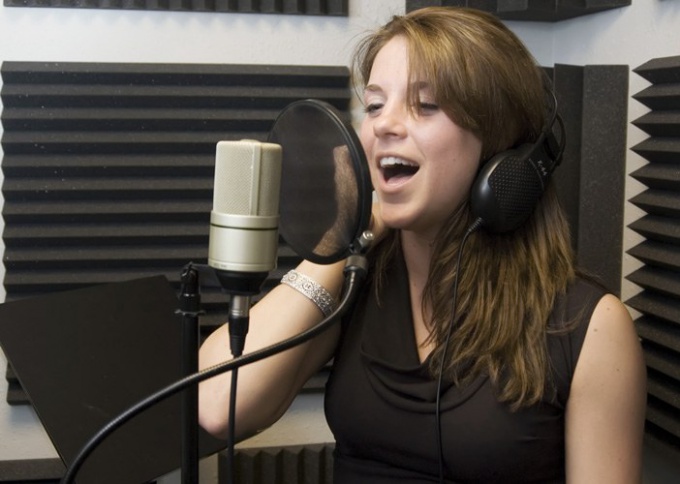You will need
- video;
- - directional microphone;
- - pop filter;
- - text editor;
- program Adobe Audition.
Instruction
1
Collect the text that you want to overlay the video into a single file. Adjust the formatting of the document so that no one line is not broken up into fragments that are on different pages. Print prepared file and fix the sheets so that you could easily see the text while recording.
2
Attach the microphone to the rack or place it so that the process does not touch his body. In front of the MIC, place the pop filter, which will help to neutralize when recording explosive consonants. Such a filter can be made in thick tights, two layers of stretched to any suitable frame size, like a small Hoop.
3
Connect a microphone to the computer. Launch Adobe Audition and choose from a list of Workspace the Edit item View. In the window that opens option Windows Recording Mixer from the Options menu, select the entry that connected the microphone and adjust the volume. Ctrl+N in the editor, create a new file and select the audio options: the sample rate and number of channels. To start recording click on the Record button in the Transport palette.
4
Before reading the text, record a few seconds of silence. This fragment during further processing of the sound you use to capture the noise profile. Being no closer than twenty centimeters from the microphone, read the text. This is best done standing. If you fail uttered the phrase, read it a second time. When you edit a broken brace would be cut.
5
After finishing recording, press the Stop button of the Transport palette and save the file to your hard disk by the Save option of the File menu.
6
Select a section of the recording before the text and take from it a noise profile using combination of Alt+N. the Noise Reduction Option group Restoration Effects menu remove background noise from a recording. Option Normalize Amplitude groups the same menu adjust the sound volume.
7
Listen to the resulting recording. Highlight and delete by pressing Delete corrupted fragments. Cut the recording into individual phrases, selecting the desired portion and using the Cut option of the Edit menu. To insert sound into a new file, use the Paste option to New in this menu.
8
In the field Workspace switch Video+Audio Session. Option Import File menu, load the movie editor that you voiced. If the Files palette visible only files with icons in the form of sound waves, click the Show video files from the bottom of the palette.
9
Click on the file icon in the form of a film to display the shortcut menu and select Insert Into Multitrack. On one of the track editor window will appear the original video sound and image can be seen in the Video palette.
10
Put the pointer to the fragment from which must begin the first phrase of voice and paste the file with the desired text if you select Insert Into Multitrack to one of the audio tracks. To change the start time of a phrase, hold down the right mouse button and drag the file along the path. In the same way, insert the remaining fragments.
11
To combine the recorded sound with the original or with background music included in the soundtrack of the film, you'll need to change the volume on some sections of the tracks. This can be done by building on the key points of the envelope curve. Hover the cursor on the line at the top of the track and click on it. Created by sliding the point down, you will get a smooth decrease of the volume of the selected track from the beginning to the inserted point.
12
If it turns out that phrase is uttered too quickly, click on the desired track, open the context menu. Selecting the Edit Source File, you return to the edit window where you can apply the option group Time Stretch/Pitch Effects menu to change the speed of the sound fragment.
13
To save the video with a new sound switch to Video+Audio and select Video group Export File menu. If you want to save only the sound and insert it into a movie using another program, use the Audio Mixdown option.
